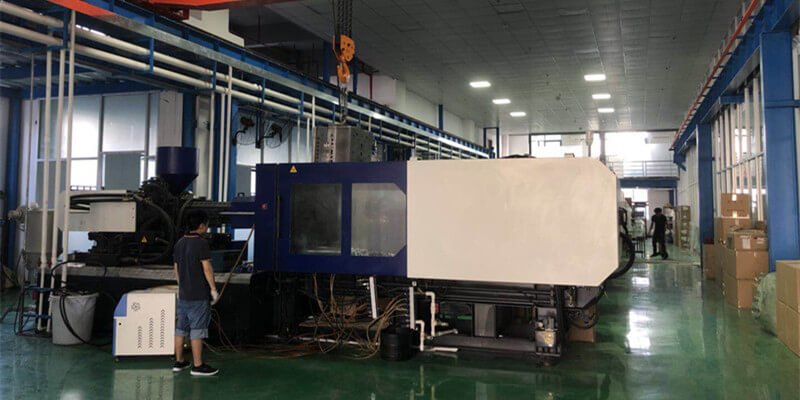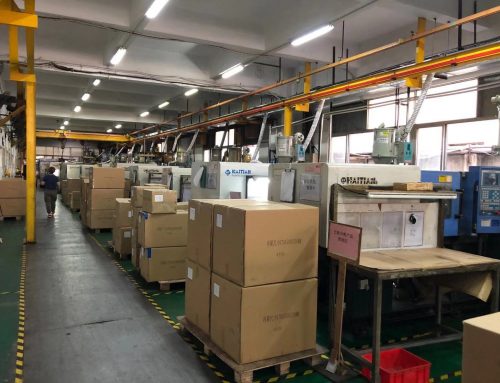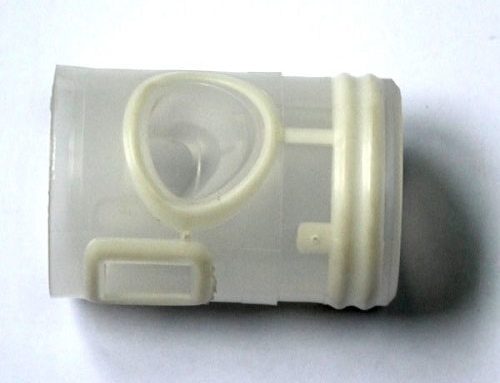Production of injection molded products is inseparable from mold, so working state of mold has a crucial relationship with quality of injection molded products. Molds create value in use, but they gradually lose their value during use. Therefore, operators must pay great attention to the use of molds and following points should be noted.
(1) Before use, check whether there are impurities or dirt in all parts of mold. For plastic molding material and impurities remaining in the mold, use a cotton yarn to scrub and remove adhesive.
(2) Reasonable selection of clamping force, which is based on the fact that no flash is produced when product is molded. It is a wrong idea that the higher the better. Cause the higher power consumption, the transmission parts will be easily damaged.
(3) Each transmission part should be well lubricated, so it is necessary to maintain lubrication of plastic mold parts.
(4) It is not allowed to hit any part in the mold with heavy objects such as hoes to avoid deformation or even damage to the mold.
Maintenance of Plastic Molding
1). Maintenance of cooling waterways
Function of cooling water channel is to cool plastic parts in the cavity by cooling water, which has a great influence on the molding process of plastic parts.
1-1). Hazards of cooling water channel blockage
During long-term work, surface of cooling water channel is prone to deposit scale, dirt, rust, etc., which will reduce flow area of cooling water flow channel and greatly reduce heat exchange between cooling water and mold, so that cooling effect is greatly reduced.
1-2). Inspection of cooling water channel blockage
The increase of sediment on the surface of cooling water channel causes partial blockage of the water channel, which can be determined by measuring the flow rate of the cooling water in the internal condition of cooling water channel. When measuring, a pressure control valve can be installed between mold and cooling water channel to measure pressure drop of cooling water through mold under same conditions. Thereby, clogging of cooling water channel can be discriminated. If it is blocked to a certain extent, it must be cleaned up in time.
1-3). Cleaning of cooling channel
Since design of cooling channel is related to shape of cavity on plastic molding design in mold making, its shape is twisted and inconvenient to disassemble. Therefore, it cannot be cleaned by mechanical means. While it can only be washed with a cleaning agent, and adhered dirt is removed under strong force of cleaning agent . There are a variety of cleaning agents that can be used.
2). Maintenance after plastic mold unloading
After injection mold has completed a given production task, it needs to be removed from injection molding machine. When disassembling, carefully remove residual plastic and use different cleaning methods according to different properties of different plastic molding material. Generally, soapy water can be used to remove residual plastic and other deposits from mold, and then mold is allowed to air dry. If there is a rust point on the surface of the cavity, it should be removed, polished, and then coated with lubricant to re-stock.
During working process, there will always be some failures in plastic mold, which will adversely affect product quality, productivity, mold, etc. As followed will be described.
2-1). Mold deformation and its elimination
Mold deformation means that mold has undergone excessive elastic deformation or plastic deformation in the work process, so that mold cannot work normally or product quality is unqualified. Reasons and troubleshooting methods are as follows.
A) Insufficient rigidity
In plastic molding, mold is subjected to a large holding pressure. If pressure causes permanent deformation of mold, mold will not be used. But even within elastic limit and deformation of mold can be restored, the resulting cured molding will make opening mold difficult or even impossible to open. When this happens, it is impossible to modify the mold from structure, but it is possible to appropriately reduce injection pressure, or to frame reinforcing rigidity from outside. Although it is not good to look at, it is do practical.
B) Mold assembly imbalance
If mold is improperly assembled, such as poor mold alignment, mold clamping and joints are not accurately centered, it will make mold filling imbalance and may cause deformation or misalignment of mold. In this regard, mold should be reassembled. For filling imbalance, sometimes correction gate can be used to correct it.
2-2). Cavity damage and its elimination
Cavity is the place where plastic part is molded, and its damage will directly affect quality of product. Cavity damage is a hard injury on the inner surface of cavity, which causes scratches, pits, cracks and other defects on the surface. And its elimination method is as follows.
A) Hard object damage
Sometimes it is difficult to take plastic parts after opening mold. Use a hard tool such as a screwdriver to barely take it, which is easy to damage the cavity. In addition, after opening mold, accidentally dropping a hard object such as a wrench or a hammer into the cavity will cause damage to the cavity.
B) Improper operation
If plastic part is not taken out before mold is closed especially in the automatic molding, cured plastic part is easy to damage cavity and mold.
C) Repair of damage
After cavity is damaged, it is difficult to continue working without repairing. Repair methods for cavity are as follows.
C-1) Welding. Welding is a common method of repair. The most common welding method is gas welding. If electric welding is used, mold is prone to deformation or even cracking due to excessive temperature. If electric welding is a must, make sure mold is preheated and heat treated after welding.
C-2) Inserts. For damages with small area and deep depth, inserts can be used. Generally, inserts are drilled after drilling. When drilling, be careful not to drill through cooling channels and screw holes. Fit of insert and cavity should be tight, and then it can be smoothed after being installed.
C-3) Electroplating. For defects with a depth of less than 0.5mm, it is better to repair by electroplating, and it can be plated with copper or chrome.
C-4) Tap. For a cavity with a soft material, a blind hole may be drilled on the back side of the damaged part, and then tape bottom of the blind hole to make the damage protrude; or tap at a distance of 3 mm from the damage to make the concave protrusion. Then smooth, ground, and polish the raised portion.
2-3). Mold rust and its elimination
Plastic mold is made of tool steel, and it encounters corrosive gas, water and other substances that cause rust during work. Plastic parts made from rusted molds will cause quality problems, therefore it need to be excluded.
A) Gas produced by melt decomposition
Some materials produce volatile gas when heated, and many of them produce volatile gas when overheated. These gas are corrosive and they pervade machine. They can corrode mold when mold is not working. In this regard, when machine stops working, apply a soft cloth to clean mold and close mold. If it is not used for a long time, spray rust inhibitor in the cavity, and then apply butter to mold.
B) Cooling water in plastic mold
Multiple cooling water in the mold is used to cool, so there is much water around the machine. If mold is cooled to the dew point, moisture in the air will form water droplets on the surface of mold. If it is not wiped off in time, it will rust easily. Condensate is produced very quickly, especially after mold has stopped working. Therefore do not stop molding easily, even if you want to stop, turn off the cooling water and dry the mold.
C) Carbide produced during molding
After mold is worked for a long time, plastic molding material precipitates and decomposes to form carbides, which often cause the mold to wear, corrode or rust. In this case, if any carbide formation is found, immediately wipe it off with a dry cloth and wipe it off.
Hafo Mould, plastic molding company specialize in the development of custom plastic molding around 20 years. Welcome to your inquiry and we will service you 24-hours!





